15/08/2021
Posted by: TPMS Bypass
When your tire is underinflated, an icon, horseshoe-like with an exclamation point, illuminates on the gauge cluster of your car’s dashboard. The technology responsible for giving out this alert is the tire pressure monitoring system (TPMS).
The TPMS gets information regarding their air pressure level from sensors. Depending on the type of TPMS installed in your car, the system may be relying on air pressure sensors inside your tires or the anti-lock brake system wheel speed sensors.
Why Do People Opt to Disable Their Tire Sensors?Clearly, these sensors are critical for your TPMS to work. But why do some car owners choose to disable their tire sensors?
First, you have to understand that sensors need to be in tiptop condition and mounted properly as well as reset accordingly to avoid false underinflated or overinflated tire alerts.
Yes, you read that right! Your TPMS may warn you that one of your tires do not have the correct air pressure level even if there is no real issue. There are various reasons for this, but the problem has something to do with the sensors most of the time.
For example, the TPMS warning light turns on when a relearn is not done after replacing your flat tire. In this situation, the system is still getting signals from the replaced underinflated tire instead of the new one. This is why you get an alert that you have a flat tire.
False TPMS warning alerts rarely indicate a major issue with your vehicle – one that diminishes its roadworthiness and threatens your safety. However, dealing with them can be inconvenient, annoying and even expensive since you might need professional help to resolve the issue.
These false alerts can also be distracting as the warning light stays on until the issue is resolved. This can be dangerous since a distracted driver is more likely to get in a car collision.
Inconvenience, annoyance, additional expense and safety hazards – these are just some of the reasons why a handful of car owners are disabling their TPMS.
Disable Tire Sensors – What Does It Mean & Can It Be Done?When people ask about disabling their tire sensors, what they actually want to know is if there’s a fuse that can turn off the TPMS.
Currently, the tire pressure monitoring systems installed in vehicles do not have an on/off button. Similarly, cars do not have a built-in fuse to stop sensors from transmitting information to the electric control module (ECM).
Due to the absence of an on/off switch, some employ crude methods to disable their TPMS.
For example, some choose to remove one of the sensors or forego buying a replacement when it gets damaged. It should be noted, though, that these options do not turn off the TPMS. In fact, doing these things is going to cause the warning light to stay on.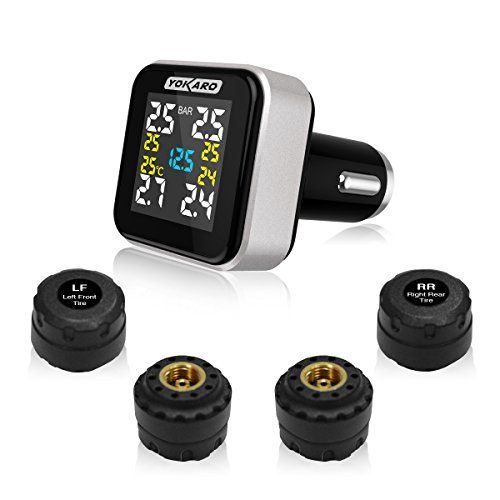
Others resort to putting black tape on the icon to resolve the issue of having an illuminated TPMS warning light. This way, they no longer see it and get distracted.
You are going to find other proposed methods of disabling the TPMS. But unlike the one mentioned above, these methods would require you to tinker with your car’s wirings or ECM. Apart from being complicated, these options can be risky because they can compromise the roadworthiness of your vehicle.
Simple and Easy Way to Disable Your Tire SensorsNow, is there a better way of turning off your TPMS?
Yes, there is a sophisticated yet non-invasive method of disabling your tire pressure monitoring system. All you have to do is use an emulator designed to bypass the TPMS.
The TPMS bypass emulator is a small box-like device equipped with technology to “turn off” your tire pressure monitoring system. Once it is activated, you don’t have to worry about the TPMS warning light turning on. Even if you have a damaged sensor or forget to relearn after changing tires, the warning icon is no longer going to light up.
Even if you have a damaged sensor or forget to relearn after changing tires, the warning icon is no longer going to light up.
With this device, it is as if you have a TPMS on/off button. Activate it and keep it in your car to disable the TPMS. Deactivate the device if you want to enable the system and get alerts about your tire’s pressure level.
It is also worth mentioning that the device won’t require you to manipulate any wires in your car or modify the ECM. So, you don’t have to worry about making alterations that can interfere with the safety and performance of your vehicle.
In summary, you can disable your tire sensors or TPMS. There are different ways to do this, but it is best to choose a non-invasive and failproof method – using a TPMS bypass emulator. However, if you decide to disable your TPMS, make sure that you stay vigilant when it comes to the condition of your tires and regularly check their pressure level.
Want to disable your tire sensors or TPMS? Do it safely and successfully using our bypass emulator! Visit our website to view our products!
31/01/2022
Posted by: TPMS Bypass
How many times have you taken your car to your mechanic because your TPMS light is on but the pressure level in your tires is correct? How many gas station detours have you made because you got a warning that you have an underinflated tire only to find out that all wheels are okay?
If you’ve encountered these scenarios several times, then you are probably tired of them. Perhaps, like many vehicle owners, you’re even looking for ways to turn off your tire pressure monitoring system to finally stop dealing with these false warnings.
Perhaps, like many vehicle owners, you’re even looking for ways to turn off your tire pressure monitoring system to finally stop dealing with these false warnings.
But is it possible to stop getting these alerts about your tires? Is there a TPMS disable tool or device that can keep the TPMS warning light off, so you don’t get distracted?
Does a TPMS Disable Tool Exist?If by TPMS disable tool you mean a device that can “turn off” the car’s tire pressure monitoring system’s light, then yes – this kind of device exists. It is actually called a TPMS bypass emulator.
This innovative technology is designed to “turn off” the TPMS in a non-invasive manner. This means that you don’t have to modify your vehicle (e.g., reconfigure your ECU or wire anything to the car) for the device to work.
Developed by engineers, the emulator connects to the vehicle via a wireless signal. All you have to do is activate the device and place it in your car.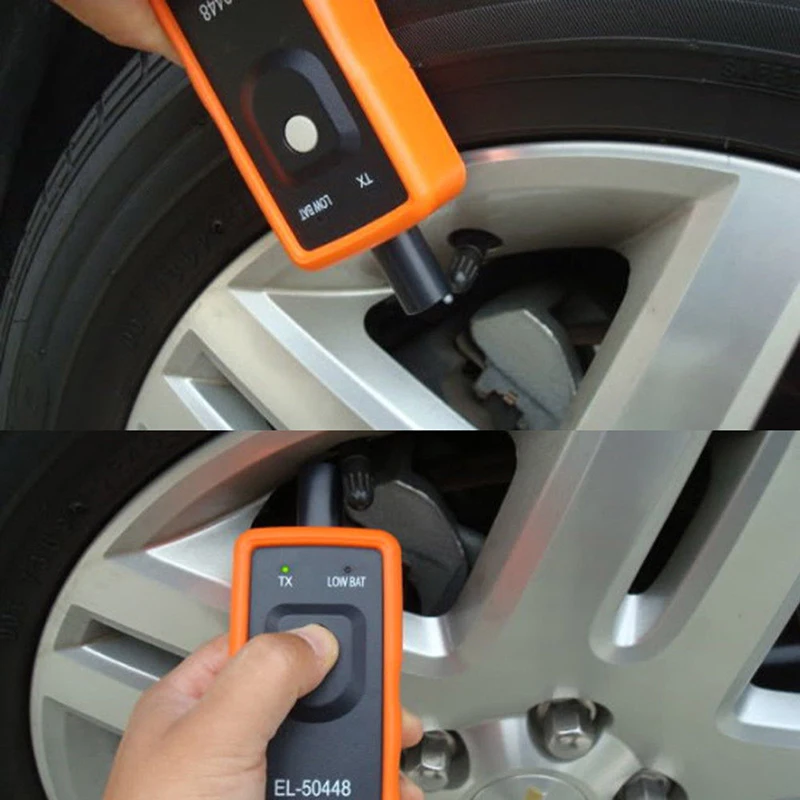 As long as the emulator is on, your TPMS is disabled, and the warning light won’t be illuminated.
As long as the emulator is on, your TPMS is disabled, and the warning light won’t be illuminated.
The TPMS bypass emulator works for both tire pressure monitoring systems – direct and indirect. So, whether you have TPMS sensors or not, you can use this device if you want to stop dealing with faulty warnings about your tires’ pressure level.
TPMS Bypass Emulator vs Other Disabling MethodsTruth be told, this device is the best option available today for this specific concern. Many of the other methods are crude and unsafe.
One method involves placing the sensor in a pressurised container. Another entails removing and replacing wires to switch off the TPMS light permanently.
Some of these approaches may work, but they are temporary and risky. Keep in mind, manipulating the wires or reprogramming the computer system can compromise the vehicle’s roadworthiness and your safety. Hence, it is best to steer clear of these methods to avoid accidents.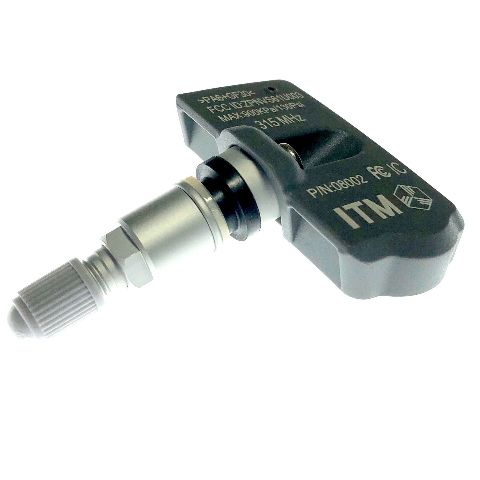
With the emulator, you don’t have to tinker with your car. You don’t have to make invasive changes that can affect its performance and, consequently, your safety.
In fact, the device won’t render your TPMS unusable permanently. You can turn off the emulator if you want to use your TPMS again.
Do I Need a Mechanic to Activate the TPMS Disable Tool?Another great thing about this tool is that it is easy to install or activate. You won’t even need to take your car to the dealership or mechanic.
The device is already configured to match your vehicle’s make and model. So, you don’t have to set up anything. Basically, all you need to do is to ensure that you order the emulator for your specific car.
Moreover, the device comes with detailed instructions for activation. Just follow the step-by-step guide. Once the device is on, you must keep it in the vehicle, preferably near the receiver.
See – activating it is that simple! No need to go to the mechanic or dealership. No additional expense for you.
No additional expense for you.
Remember, your TPMS won’t be working when the emulator is activated. This means you won’t get any alert when your tire is underinflated or overinflated. Hence, be a responsible driver and regularly check your tires’ pressure level.
Are you looking for a TPMS disable tool? Check out our TPMS Bypass Emulator – the only device of its kind that lets you turn off your TPMS light without modifying your vehicle. Click here to view our products or send us an email at [email protected]
The TPMS system is designed to constantly monitor the degree of inflation of tires. Due to frequent errors or malfunctions, some drivers want to disable tire pressure sensors to avoid constant maintenance and problems.
Contents
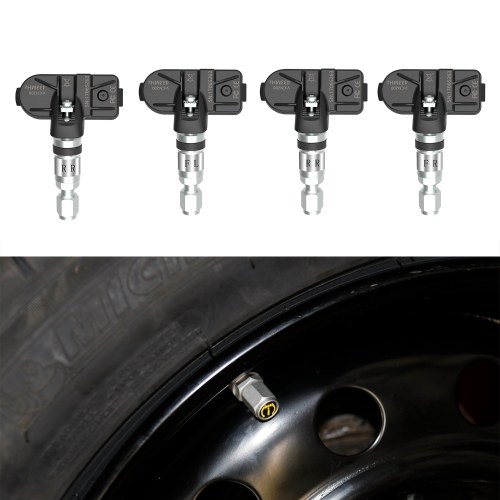 1 Sensor reset button
1 Sensor reset button To understand how and why this is done, you should understand the design of the device and the principle of its operation. The skate inflation control system contains several interconnected blocks:
Principle of operation - pressure sensors monitor the degree of tire inflation in real time. When the boost drops below a predetermined level, the controller is triggered, the signal is sent to the block, where it is processed into pulses that are understandable for indication. Information is displayed on the dashboard.
The control system displays a malfunction on the panel by means of a special light bulb. The module signals to the driver that the pressure in one or more tires has dropped below the required level.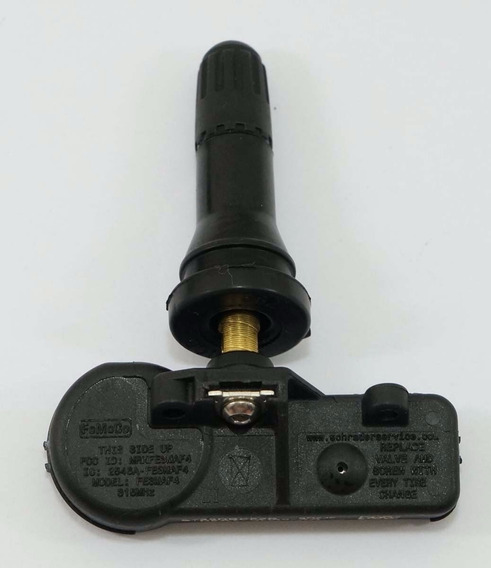 This may indicate the presence of a puncture or severe damage to the tire.
This may indicate the presence of a puncture or severe damage to the tire.
The design and operation of the sensors are primitive. To perform diagnostics of the part, it is enough to execute:
If the TPMS module icon does not go out, you will need to disassemble the wheels and examine the status of the sensors in detail. The sensor is removed from the seat and inspected. If there are no visual violations, and the element refuses to work normally, it is recommended to change the battery in the device case.
Note! On some types of sensors, the power supply cannot be replaced. Such sensors are replaced immediately.
Calibration is not required for most element types.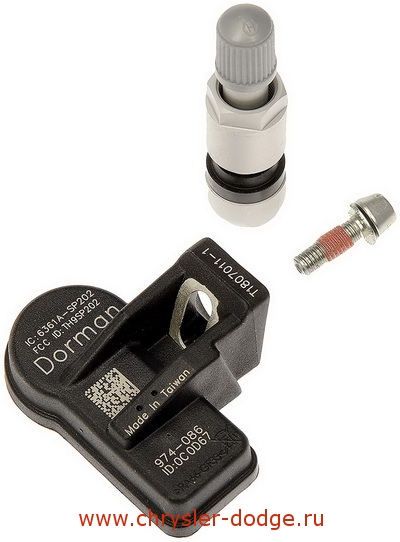 Devices from the factory are produced completely ready for operation. To activate them, you need to install them in the wheel and the system independently reads new sensors.
Devices from the factory are produced completely ready for operation. To activate them, you need to install them in the wheel and the system independently reads new sensors.
In some modifications, you will need to make pairings in manual mode. Each sensor has a serial number. It is driven into the corresponding menu field of the on-board computer, after which it is installed in the tire.
There may be several reasons.
The pressure sensor cannot be disabled by standard methods. There is no such option in the on-board computer. A flashing and “cutting out” of a part of the program code is in progress.
A flashing and “cutting out” of a part of the program code is in progress.
Some BCs have this feature. To deactivate - you need to press the desired button.
When a flat tire is detected, the sensors will signal a loss of pressure. In some vehicles such as Toyota, the sensors are turned off forcibly. Practiced on off-road vehicles, where the tires are bled to make it easier to overcome obstacles.
The fault code is cleared automatically. To remove the indication, you will need to pump up the wheels to a predetermined level and drive the car for about 10 kilometers.
On some versions of the car, in order to reset the counter, you need to enter the settings menu on the dashboard. Then proceed according to the instructions.
To use the button correctly, first read the manufacturer's instructions. The button is located on the dashboard or near the steering rack.
If the indicator lamp appears and does not go out, there are two reasons.
It is possible for the indication to appear when the driver has put on the spare tire. Some machines have 5 sensors. If one of them is outside the vehicle, the system will consider it as a breakdown.
Causes:

On many vehicles, the option to force the sensors to turn off is not provided and is performed only by changing the software.
Leave feedback
1. What happens if I remove the sensors from the wheels?
A warning will appear on the screen. There is no way to get rid of this warning other than removing the sensor code from the driver display.
2. If one sensor in the system stops working, can I replace it?
Yes, each sensor has a unique identification code, just program a new sensor on the display, it will automatically replace the old one. But first, try replacing the battery.
3. Do I need to reprogram the sensors after a tire rotation?
No. The vehicle owner must rotate the tires after a certain mileage, but if the rims are used in the same places as before rotation, the display will not need to be reprogrammed.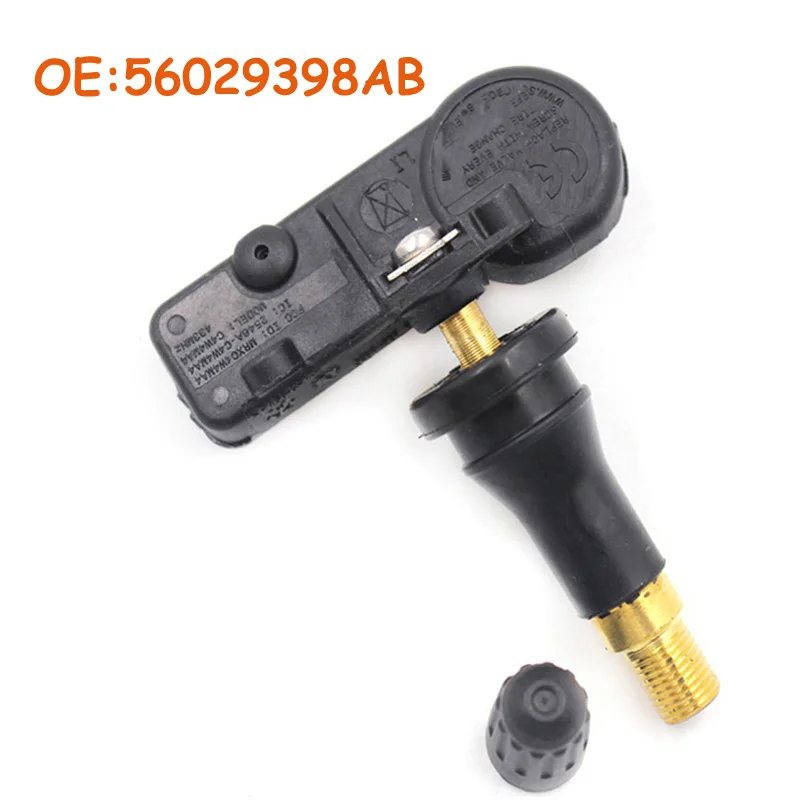
4. Can the sensors interfere with each other?
Each INCAR TPMS sensor has its own unique code, just like each car has its own VIN number. The sensors send signals independently of each other, and it takes very little time to transmit the signal, so the chance of mutual interference is extremely low.
5. I am having trouble recognizing the sensor, what could be causing it?
This problem can occur when using an extension on the valve stem. First, remove the extension and install the sensor directly on the stem, this usually solves the problem.
6. Why is there no pressure or temperature reading on the LCD, only the tire icon is flashing?
Sensors transmit pressure and temperature every 5 minutes. The display will stop showing pressure and temperature if it does not receive a signal from the sensor for more than an hour. It's probably time to replace the battery.
7. How can I turn off the low pressure warning on the screen?
Inflate the tire marked on the display to the correct pressure.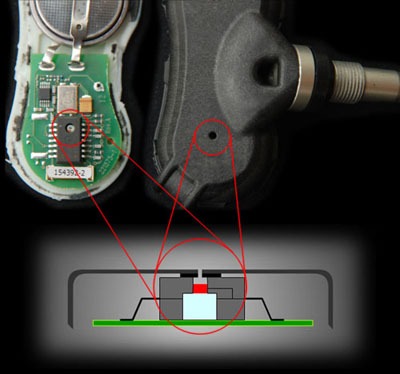
8. The TPMS display gives a low pressure warning when I start the car, but after a few minutes of driving the alarm goes off.
In cold weather, the sensor receives a lower pressure value. As you ride, the air inside the tires heats up and the pressure increases proportionally. Try expanding the tire pressure range from the lower limit.
9. Will the sensor cause tire wear?
There are no problems with wheel balancing. On the contrary, due to the constancy of the nominal pressure in the tire, its wear will be minimal.
10. A few weeks ago I filled up the tires and everything was fine, but now the display shows me that the tires are low pressure.
Trust the INCAR TPMS sensors. Either the average daily temperature in your area has dropped due to the change of season, or there has been a natural air leak. First you need to pump up the tires.
11. Can the display be reset to factory settings?
Yes, to restore factory default settings, turn off the display, press the Set button and turn on the display.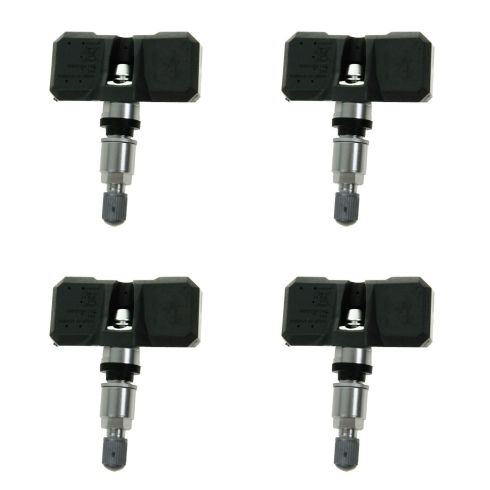 The red indicator will turn off and the factory settings will be restored.
The red indicator will turn off and the factory settings will be restored.
12. I have an alarm on the display, what should I do?
First, park in a safe place on the side of the road. Find out which wheel is causing the alarm by checking the icons on the display as well as the type of alarm. For example, it could be overpressure in a tire, which is related to base pressure settings - overheating can occur after a long break from driving on a hot day. Referring to the instructions, you will accurately determine the source of the problem and its exact location. Do not continue driving until the display returns to normal.
13. I received a low battery alarm, what should I do?
Eventually, all batteries run out. Three sensors from the INCAR TPMS range have replaceable batteries that can be easily replaced if needed. The CR1632 type battery is available from electronics stores or online. Two more sensor models do not allow you to change batteries - you will have to buy new sensors.
14. What is the display sleep mode?
If the display is left idle for more than 15 minutes, it turns off to conserve battery power. When it detects movement again, it will beep and the screen will come to life, indicating the exit from sleep mode. If the display was turned off overnight (which is optional), simply turn it on before leaving the parking lot and the tire pressure and temperature will be updated every 5 minutes again. Even if your display is in sleep mode, the INCAR TPMS system will always monitor the tires and will give an alarm if the pressure or temperature is no longer within the set parameters.
15. I receive a hard braking alarm, what should I do?
When the tire is under extreme load, a slow leak signal can be obtained. The fact is that at first the pressure in the tire jumps up, and then decreases over a short period of time. This situation is similar to a slow loss of air, and it often occurs when there is water inside the tire.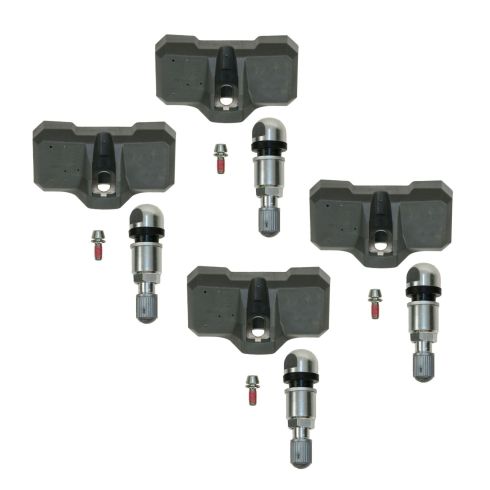
16. Everything works too well, how can I test the INCAR TPMS system?
The switched on display should be left in the driver's cab, and the sensors should be unscrewed one by one and re-tightened on the valve stem. The fast leak alarm should activate and then stop when the sensor is returned to the wheel. The beep is loud enough that you can hear it.
17. Are there any special recommendations for winter storage of INCAR TPMS equipment?
It's a good idea to remove the sensors and display from your car if it's been parked for a long time, especially in cold weather. Keep the system in a warm place, as you will significantly extend the life of the batteries. Number the sensors or put them in an egg carton so they can be put back on the same wheels. This way you avoid having to do a new setup. The sensors do not use power unless they are mounted on the wheel.
18. How will the driver's display behave if the sensors are installed only on part of the car's wheels?
The INCAR TPMS cycles through the tires.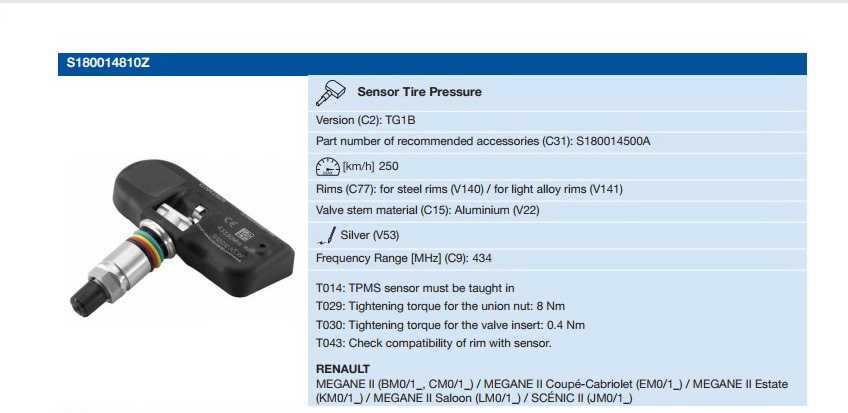 As the cycle progresses, the tire symbol flashes on the display to indicate that that particular tire is being tested. You will see the exact pressure and temperature for that tire. The display will then automatically move to the next wheel on which the sensor is installed. You will only get readings for tires equipped with sensors, the rest will be skipped and will not take time.
As the cycle progresses, the tire symbol flashes on the display to indicate that that particular tire is being tested. You will see the exact pressure and temperature for that tire. The display will then automatically move to the next wheel on which the sensor is installed. You will only get readings for tires equipped with sensors, the rest will be skipped and will not take time.
19. If you shake the driver display, you can hear something small rattling inside.
This is not a standard situation. If you feel that there is something wrong with the display, or if this sound annoys you while driving, you should have the equipment examined by our experts. But first, check the charging port on the left side to make sure it's safe.
20. How can I turn off the backlight of the display?
The backlight cannot be turned off manually as it is controlled by the ambient light sensor, but you can unplug the power cord and the backlight of the display will turn off automatically to conserve battery.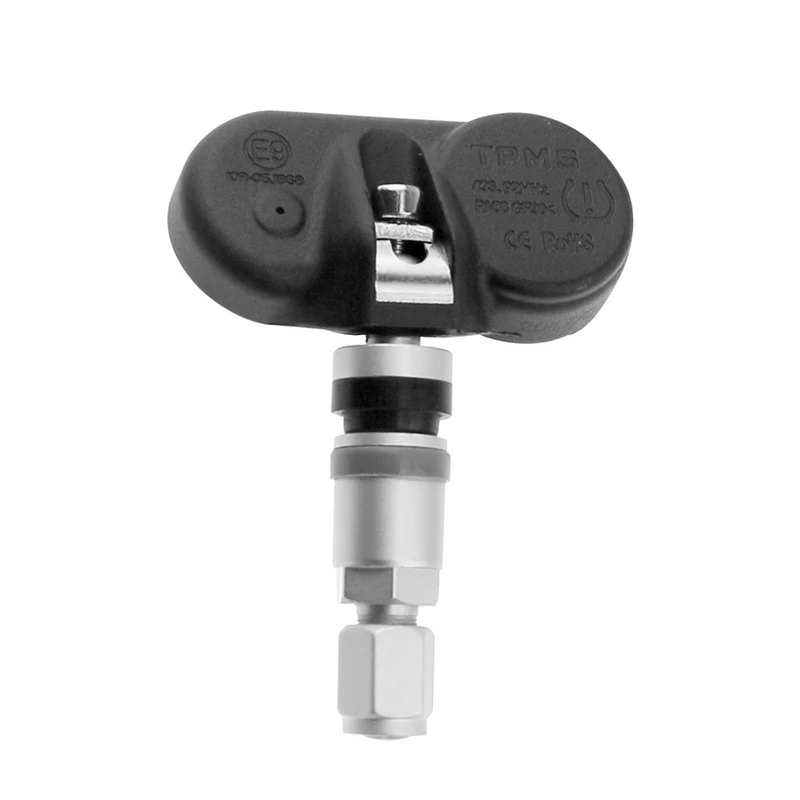
21. My display says that the tire pressure is 5 atm, and the pressure gauge shows 5.5 atm. What does this mean?
INCAR TPMS has been tested and certified by an external laboratory with a pressure measurement accuracy of 0.1 atm. Perhaps the sensor does not receive full contact and, accordingly, full pressure, in contrast to the pressure gauge. If the other pressure gauge also shows a discrepancy, and the measurements are taken in the morning before the trip, you need the help of a specialist.
22. After one year of operation, the two rear tires on the trailer are no longer permanently available to the display and the display shows less information about them. Why is this happening?
Please write to us at the contact address or call us, we will help you solve your specific problem. Perhaps your trailer began to interfere with the reliable passage of the signal from the sensors, or the batteries simply ran out of them, which significantly weakened the signals from the sensors.